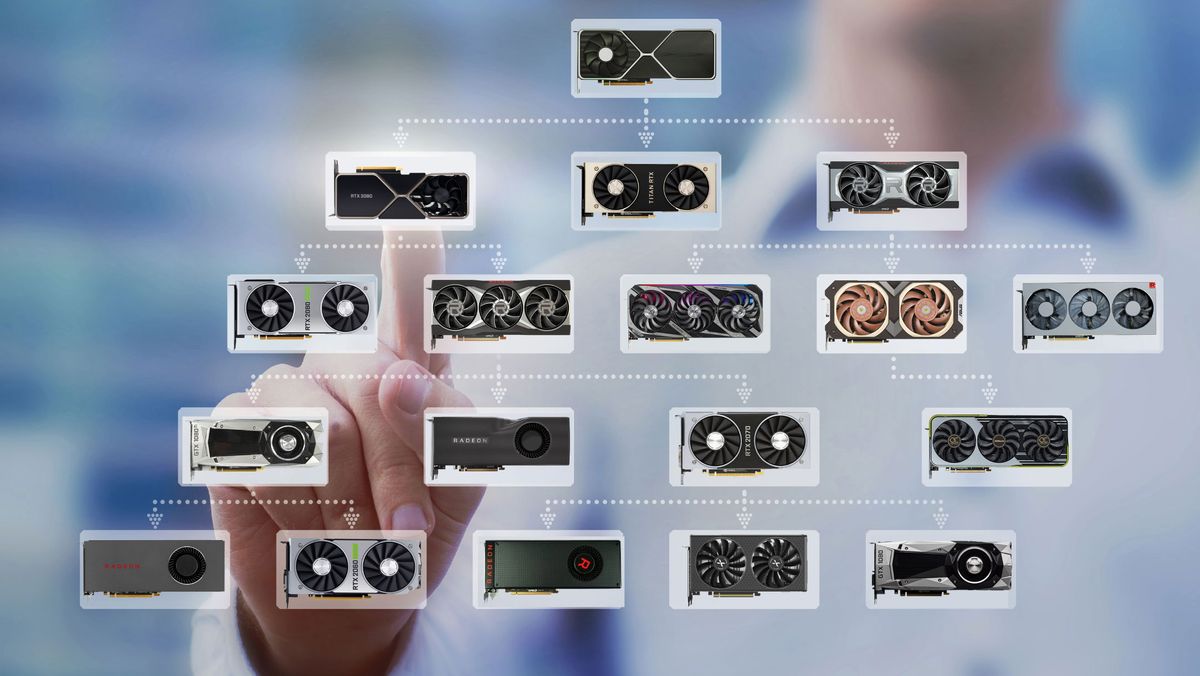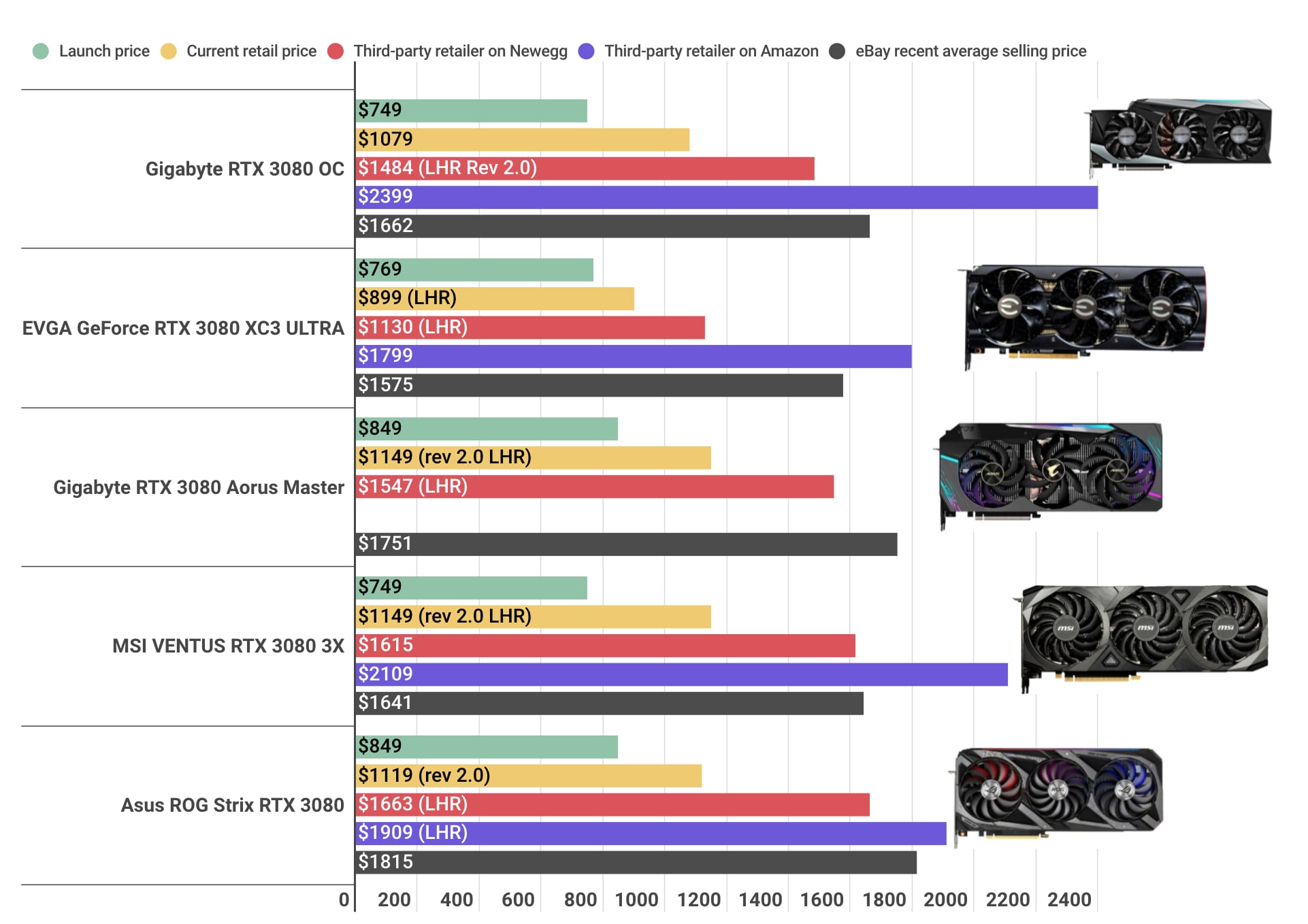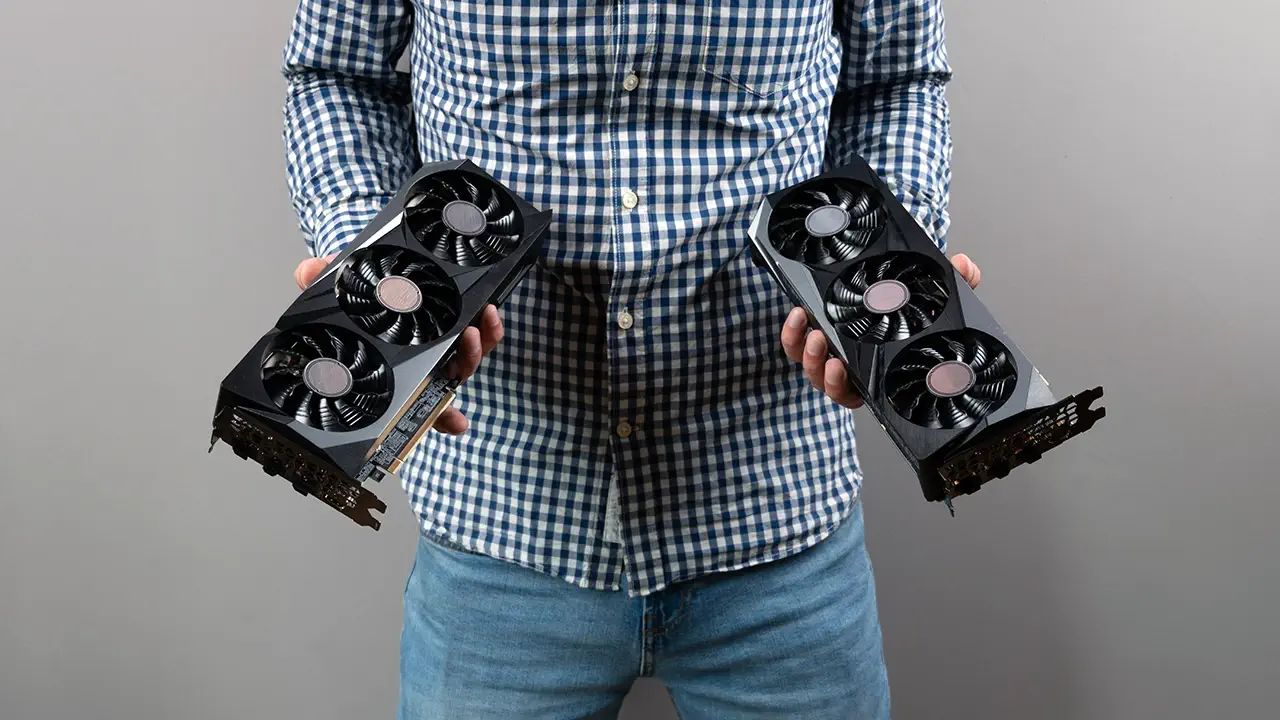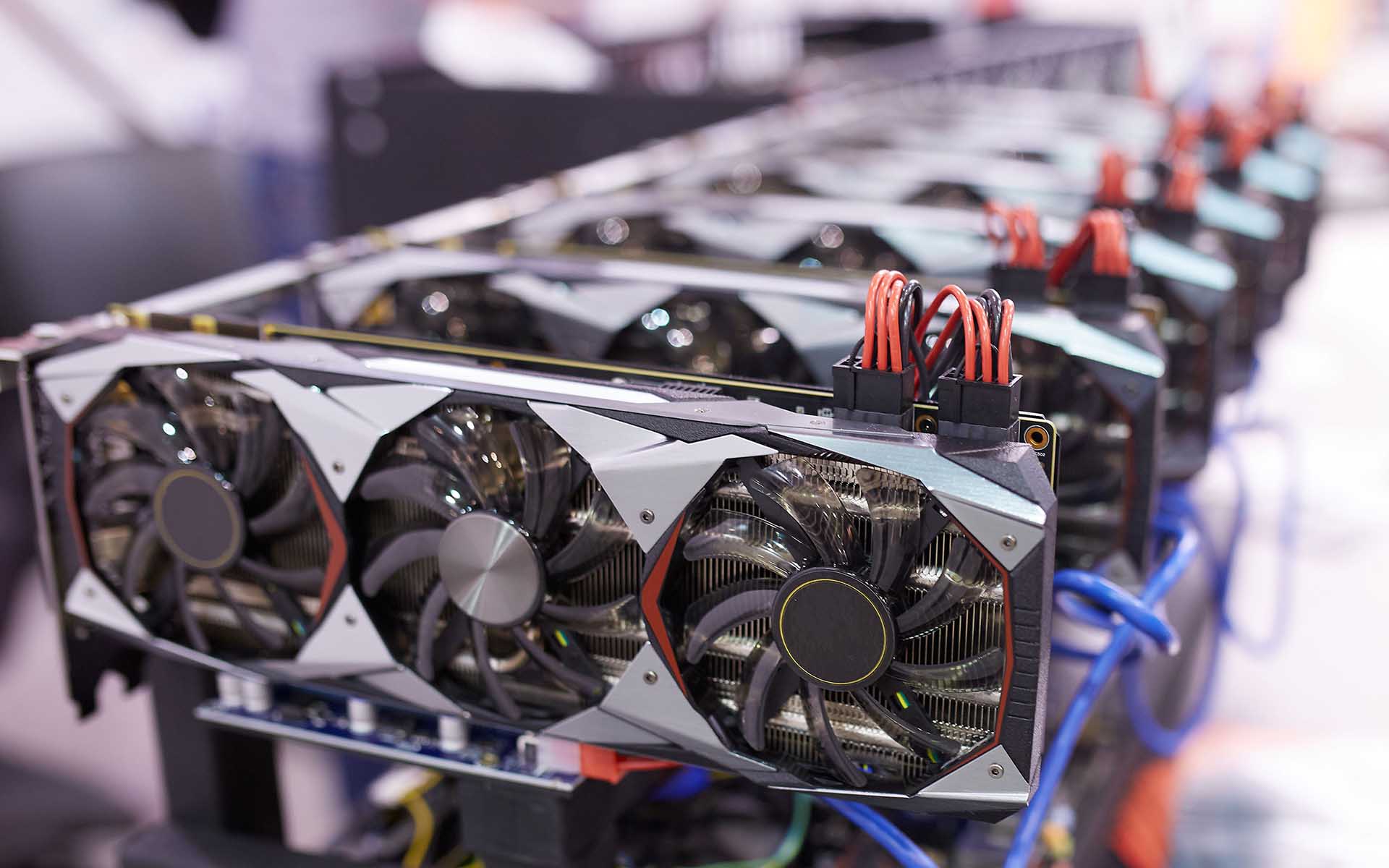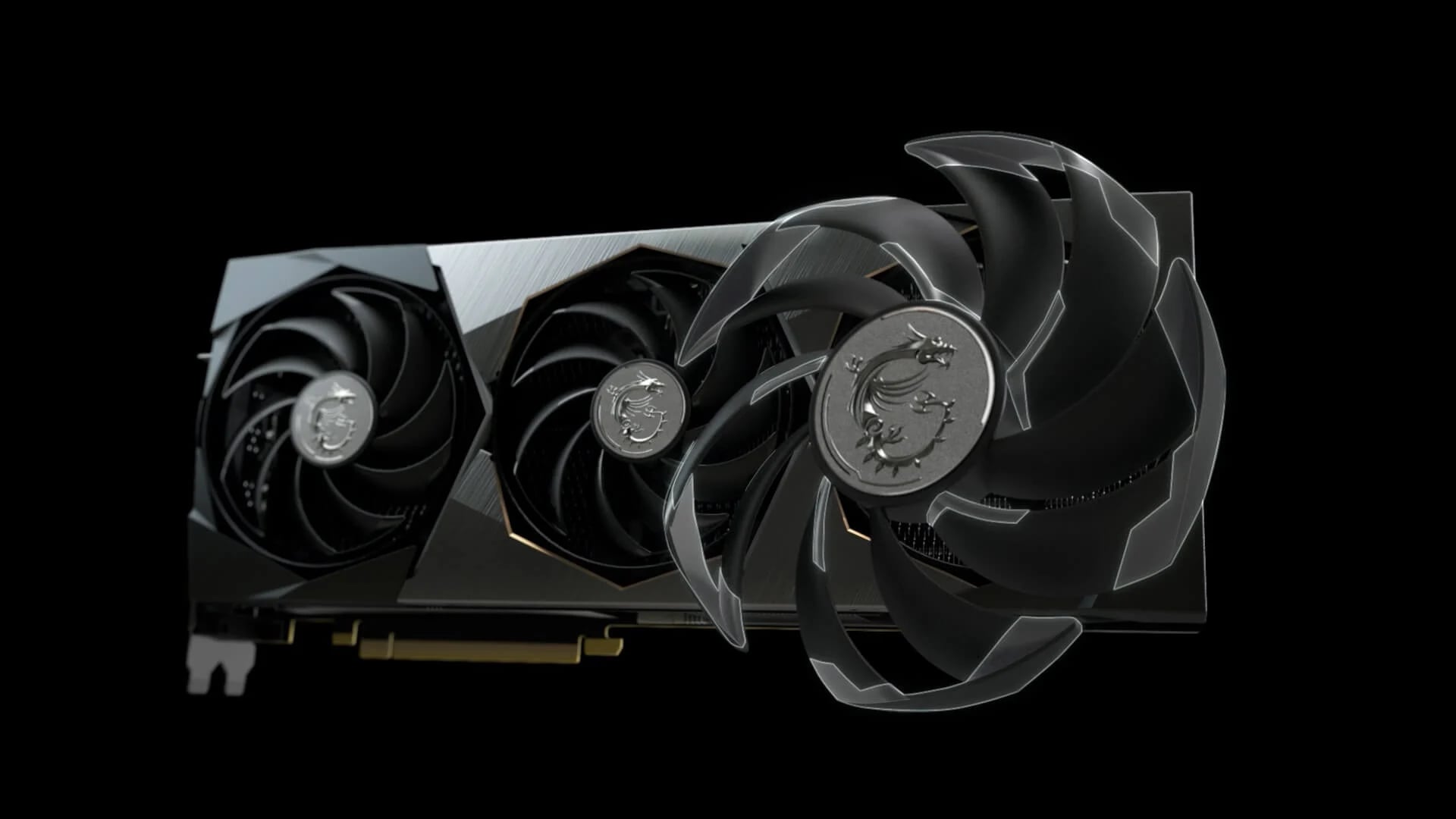Introduction
In today’s digital age, where graphics-intensive applications and games are becoming increasingly popular, having a high-performance graphics card is essential. Whether you’re a passionate gamer or a professional graphic designer, maximizing the performance of your graphics card can significantly enhance your overall experience.
However, it’s not always necessary to invest in the latest and most expensive graphics card to achieve optimal performance. There are several steps you can take to improve graphics card performance without breaking the bank.
In this article, we will discuss ten effective strategies to increase your graphics card’s performance. These methods range from simple optimizations to more advanced techniques, all designed to help you get the most out of your graphics card.
By implementing these strategies, you can unlock the full potential of your graphics card, resulting in smoother gameplay, faster rendering times, and improved visual quality. Whether you’re seeking better frame rates in games or quicker rendering for your design projects, these tips will help you achieve your goals.
Keep in mind that each computer system is unique, and results may vary depending on factors such as hardware specifications, software configurations, and the specific graphics card you’re using. It’s essential to proceed with caution and make incremental changes to ensure stability and avoid any potential issues.
Now, let’s dive into the details and explore the various ways you can enhance the performance of your graphics card!
Upgrade Your Graphics Card
One of the most effective ways to boost graphics card performance is by upgrading to a newer and more powerful model. Graphics cards have come a long way in terms of advancements in technology and performance capabilities.
When considering an upgrade, research the latest graphics cards available in the market and compare their specifications and performance benchmarks. Look for a card that offers a significant improvement over your current one in terms of core count, clock speed, memory size, and bandwidth.
Keep in mind that not all upgrades will be compatible with your computer’s motherboard and power supply. Make sure to check the compatibility requirements before making your purchase. Additionally, consider your budget and determine the best graphics card that offers the performance you desire within your price range.
Upgrading your graphics card can provide you with several benefits. You’ll experience smoother gameplay, better frame rates, and improved visual quality in games and applications. It will also allow you to run more demanding software and enjoy graphics-intensive tasks without any lag or performance issues.
Before proceeding with the upgrade, ensure that your computer’s power supply can handle the additional power requirements of the new graphics card. Insufficient power can lead to instability or even damage to the components. If necessary, upgrade your power supply unit to ensure a stable and reliable power source for your system.
Remember to uninstall the drivers of your old graphics card before installing the new one. You can do this by using the Windows Device Manager or a dedicated driver removal utility. After installing the new graphics card, download the latest drivers from the manufacturer’s website to ensure compatibility and optimal performance.
Upgrading your graphics card is a significant investment, but it can yield substantial performance improvements. As newer and more graphically demanding games and applications are released, having a powerful graphics card will future-proof your system and ensure you can enjoy the latest features and visuals without any compromises.
Update Your Graphics Card Drivers
One crucial step in maximizing your graphics card’s performance is keeping its drivers up to date. Graphics card drivers act as a bridge between the hardware and software, ensuring proper communication and compatibility.
Outdated drivers can limit the performance of your graphics card and may cause stability issues or compatibility problems with the latest games and applications. Fortunately, updating your graphics card drivers is a straightforward process.
The first step is to identify the manufacturer and model of your graphics card. You can do this by checking the device manager, the documentation that came with your computer, or by using third-party software specifically designed for identifying hardware components.
Once you have this information, head to the manufacturer’s website and navigate to the driver download section. Look for the latest driver release that corresponds to your graphics card model and operating system. Download the driver package and follow the provided instructions to install it.
It’s important to note that during the installation process, you may have the option to perform a clean installation. This means that the previous drivers will be completely removed before installing the new ones. A clean installation can help prevent conflicts or issues that may arise from remnants of old drivers.
After installing the latest drivers, it’s a good practice to restart your computer to ensure that the changes take effect. Once your system is up and running again, you should notice improved performance and compatibility with your graphics card.
For gamers, updating graphics card drivers can bring performance optimizations and support for new game releases. Game developers often work closely with graphics card manufacturers to implement specific optimizations for their titles. By keeping your drivers updated, you can take advantage of these optimizations and enjoy a smoother gaming experience.
Regularly checking for driver updates is essential. Graphics card manufacturers release new drivers periodically to address bugs, improve performance, and add new features. Set a reminder to check for driver updates every few months or enable automatic updates if available.
By keeping your graphics card drivers up to date, you ensure that your system is running optimally and taking full advantage of the capabilities of your graphics card.
Optimize Your Graphics Card Settings
Optimizing your graphics card settings can have a significant impact on its performance and ensure that it’s delivering the best visuals and frame rates. Most graphics card drivers come with settings and options that allow you to fine-tune various aspects of its performance and image quality.
To access the graphics card settings, right-click on your desktop and select the graphics card control panel or settings. The specific name and location of the control panel may vary depending on your graphics card manufacturer, but it’s usually easily accessible from the desktop context menu.
Once in the control panel, look for options related to performance or settings that allow you to adjust various parameters. Here are some key settings to consider:
- Power Management: Adjust the power management setting to prioritize performance over energy efficiency. This can help ensure that your graphics card operates at its maximum potential. However, keep in mind that this may consume more power and generate more heat.
- Anti-aliasing: Anti-aliasing smooths out jagged edges in graphics, improving image quality. However, higher levels of anti-aliasing can significantly impact performance. Find a balance between image quality and performance by experimenting with different anti-aliasing levels.
- Texture Filtering: Texture filtering enhances the sharpness and clarity of textures in games and applications. Adjust the filtering settings to find the right balance between visual quality and performance impact.
- Vertical Sync (V-Sync): V-Sync synchronizes the frame rate of the game with your monitor’s refresh rate, eliminating screen tearing. However, enabling V-Sync can introduce input lag and impact performance. Consider disabling V-Sync for better performance, especially if screen tearing isn’t an issue.
- Resolution and Display Scaling: Lowering the screen resolution can significantly improve performance, although it may result in a less crisp visual experience. Additionally, adjusting the display scaling settings can help optimize performance on high-resolution displays.
Experiment with these settings while monitoring the impact on performance and visual quality. Each computer and game/application combination may respond differently to these adjustments, so it’s crucial to find the settings that work best for your specific setup.
Furthermore, some games and applications have their own graphics settings that override the global graphics card settings. Make sure to check and adjust these settings within the respective game or application for optimal performance.
Remember to save your changes after adjusting the graphics card settings. Monitor the performance and visual quality to determine if additional tweaks are needed.
Optimizing your graphics card settings can unlock its full potential and provide smoother gameplay and improved visuals. Take the time to experiment with the various options and find the settings that work best for you.
Clean Your Graphics Card and System
A clean graphics card and system can make a significant difference in performance and ensure that your components are operating at their best. Over time, dust, dirt, and other debris can accumulate on your graphics card, blocking airflow and causing it to overheat. Additionally, a cluttered system with unnecessary files and applications can slow down overall performance.
To clean your graphics card, start by shutting down your computer and unplugging it from the power source. Carefully remove the graphics card from its slot, taking care to avoid any static electricity discharge. Use a can of compressed air or a soft brush to gently remove dust and debris from the fan and heatsink. Ensure that all surfaces are clean and free from any particles that may obstruct airflow.
If your graphics card has removable fan blades, you can take them off and clean them separately. Avoid using liquids or excessive force when cleaning, as this can damage the components. Once cleaned, reinsert the graphics card into its slot and ensure that it is properly secured.
Aside from cleaning the graphics card, it’s also beneficial to keep the rest of your system clean. Start by organizing and decluttering your hard drive, removing any unnecessary files, applications, or games. This can free up storage space and help your system perform more efficiently.
Next, perform a system cleanup using the built-in tools in your operating system or a third-party system cleaning software. These tools can remove temporary files, cache data, and other unnecessary files that may be slowing down your system.
Regularly updating your operating system and drivers can also help keep your system running smoothly. Operating system updates often contain performance improvements, bug fixes, and security enhancements that can positively impact your overall system performance.
Keeping your system and graphics card clean can prevent overheating, which can lead to performance throttling or even hardware failure. It’s recommended to clean your graphics card and system at least every few months or whenever you notice a significant buildup of dust or dirt.
In addition, make sure your computer is located in a well-ventilated area with adequate airflow. Avoid placing it in enclosed spaces or near heat sources that can contribute to increased temperatures.
A clean graphics card and system can help ensure that your hardware operates at its peak performance and prolong its lifespan. By investing a little time in regular maintenance and cleaning, you can enjoy a smoother and more efficient computing experience.
Overclock Your Graphics Card
Overclocking your graphics card is a technique used to increase its performance beyond its stock settings. By pushing the core clock speed, memory clock speed, and voltage of your graphics card, you can potentially gain additional performance and achieve higher frame rates in games and applications.
Before diving into overclocking, it’s crucial to understand the risks involved. Overclocking can generate additional heat and put more stress on your graphics card, potentially reducing its lifespan. It’s important to proceed with caution and take steps to monitor temperatures and ensure stability during the overclocking process.
The first step is to research and familiarize yourself with your specific graphics card model and its overclocking capabilities. Check the manufacturer’s website or online forums for information and guides related to overclocking your particular graphics card.
Once you have a grasp of the overclocking concepts, you can use various software tools to adjust the core clock speed, memory clock speed, and voltage of your graphics card. Examples of popular software include MSI Afterburner, EVGA Precision X1, or ASUS GPU Tweak.
When overclocking, start by increasing the core clock speed in small increments, such as 10-20 MHz. After each adjustment, run benchmarks or stress tests to ensure stability. If the system crashes or artifacts appear on the screen, it’s an indication that you’ve pushed the overclock too far. In that case, dial it back to the previous stable settings.
Similarly, you can gradually increase the memory clock speed and voltage, following the same testing and stability checks. Keep in mind that different games and applications may respond differently to overclocking, so it’s important to test the stability of your overclock using a variety of workloads.
While overclocking can provide performance benefits, it’s essential to monitor the temperatures of your graphics card during the process. Use monitoring software such as GPU-Z or MSI Afterburner to keep an eye on the temperature readings. If the temperatures reach unsafe levels, consider adjusting the fan speed curve or investing in additional cooling solutions such as aftermarket coolers or liquid cooling.
It’s also important to note that every graphics card is unique, and not all cards will overclock the same. Some may have more headroom for overclocking, while others may reach their limits sooner. The silicon lottery plays a role here, as individual graphics cards can have different levels of overclocking potential.
Lastly, be sure to keep the overclock settings within the limits of your graphics card’s capabilities and stay within safe operating parameters. Pushing your hardware too far can result in instability, crashes, or even permanent damage.
Overclocking your graphics card can provide a noticeable boost in performance for games and applications, allowing you to achieve higher frame rates and smoother gameplay. However, it’s essential to approach overclocking with caution, monitor temperatures, and ensure stability to maintain the longevity and reliability of your graphics card.
Monitor Your Graphics Card Temperature
Monitoring the temperature of your graphics card is vital in maintaining its performance and longevity. Graphics cards generate a significant amount of heat during operation, and if temperatures exceed safe levels, it can lead to performance throttling, instability, or even permanent damage.
There are several software tools available that allow you to monitor the temperature of your graphics card in real-time. Popular options include GPU-Z, MSI Afterburner, and HWMonitor. These tools provide accurate temperature readings, along with other important parameters such as fan speed, clock speeds, and voltage levels.
While operating temperatures can vary depending on the specific graphics card model, a general guideline is to keep the temperatures below 85°C under load. However, it’s recommended to consult the manufacturer’s specifications or online resources to determine the optimal temperature range for your graphics card.
If you notice that your graphics card is consistently reaching high temperatures, here are some steps you can take to mitigate the issue:
- Clean the Cooling System: Dust and debris can accumulate on the cooling fins, fan blades, and heatsink of your graphics card, hindering its ability to dissipate heat effectively. Regularly clean these components using compressed air or a soft brush to remove any buildup.
- Ensure Proper Airflow: Make sure that your computer case has adequate airflow. Ensure that intake and exhaust fans are functioning properly and positioned correctly for optimal airflow and cooling. Consider additional case fans or upgrading to more efficient cooling solutions if needed.
- Adjust Fan Speed: Many graphics cards allow you to manually adjust the fan speed. Increasing the fan speed can help dissipate heat more quickly, but it may also result in increased noise. Find the right balance between cooling and noise levels that suits your preferences.
- Apply Thermal Paste: Over time, the thermal paste between the graphics card’s GPU and heatsink can degrade, leading to poor heat transfer. Applying a fresh layer of high-quality thermal paste can help improve thermal conductivity and lower temperatures.
- Consider Aftermarket Cooling Solutions: If your graphics card consistently runs hot, even after cleaning and adjusting fan speeds, you might consider investing in aftermarket cooling solutions. These can range from aftermarket air coolers to liquid cooling options, providing better cooling performance and lower temperatures.
Regularly monitoring your graphics card’s temperature is essential to ensure it is operating within safe limits. By taking proactive measures to control temperatures, you can prolong the lifespan of your graphics card and maintain optimal performance for longer periods.
Utilize Performance Boosting Tools
When it comes to maximizing the performance of your graphics card, there are several performance boosting tools available that can help you squeeze out extra performance and improve your gaming or rendering experience. These tools offer a variety of features designed to optimize system performance, enhance graphics settings, and streamline resource usage.
One popular performance boosting tool is NVIDIA GeForce Experience, available for NVIDIA graphics card users. This software provides several features, including automatic driver updates, game optimization settings, and the ability to capture and share gameplay footage. GeForce Experience can analyze your system’s configuration and recommend optimal game settings to achieve the best performance and visual quality.
For AMD graphics card users, the equivalent tool is AMD Radeon Software. Similar to GeForce Experience, Radeon Software offers features like automatic driver updates and game optimization settings. It also includes a built-in performance monitoring tool that allows you to monitor your GPU’s temperature, clock speeds, and other critical parameters in real-time.
In addition to manufacturer-specific tools, there are third-party applications available that offer performance optimization and monitoring. Examples include MSI Afterburner, EVGA Precision X1, and GPU-Z. These tools provide advanced performance tweaking options, allowing you to adjust core clock speeds, memory speeds, and fan curves for fine-tuning your graphics card’s performance.
Some performance boosting tools also offer frame rate monitoring, allowing you to monitor and track your frame rates in real-time. This information can be valuable when assessing the impact of different graphics settings or overclocking adjustments on performance. It can help you find the ideal balance between visual quality and smooth gameplay.
Another aspect of performance boosting tools is the ability to customize and optimize in-game graphics settings. These tools often provide user-friendly interfaces that allow you to easily adjust settings like resolution, anti-aliasing, texture quality, and more. By fine-tuning these settings, you can optimize the performance of your graphics card to match your desired visual experience.
It’s worth noting that while performance boosting tools can provide significant benefits, it’s essential to use them responsibly and with caution. Make sure to follow the recommended settings and pay attention to temperature and stability when adjusting clock speeds or voltage settings. It’s always a good idea to monitor your system’s performance and temperature to ensure it remains within safe operating limits.
By utilizing performance boosting tools, you can optimize your graphics card’s performance, streamline resource usage, and achieve the best possible gaming or graphics rendering experience. These tools offer a convenient way to fine-tune your system settings and get the most out of your hardware.
Upgrade Your Computer’s Hardware
If you’re looking to significantly boost the performance of your graphics card and overall system, upgrading your computer’s hardware might be necessary. Upgrading key components such as the CPU, memory (RAM), and storage can have a direct impact on the performance and capabilities of your graphics card.
The CPU, or central processing unit, plays a critical role in handling the processing tasks of your computer. Upgrading to a faster and more powerful CPU can improve overall system performance, especially in CPU-intensive tasks such as video editing or 3D rendering. A faster CPU can better complement the capabilities of your graphics card, allowing for smoother and more responsive performance.
Memory, or RAM, is another crucial component that affects system performance. Insufficient RAM can result in slower performance, particularly when multitasking or running memory-intensive applications. Upgrading to higher-capacity and faster RAM modules can provide better overall system responsiveness and improve the performance of graphics-intensive tasks.
When it comes to storage, consider upgrading to a solid-state drive (SSD) if you’re still using a traditional hard disk drive (HDD). SSDs offer significantly faster read and write speeds, which can result in faster loading times for applications and games. This can improve the overall responsiveness of your system and reduce the time it takes to load and save large files.
In addition to these core components, upgrading your power supply unit (PSU) may be necessary if you’re planning to upgrade to a more powerful graphics card. A higher wattage PSU can provide the necessary power to support the increased power demands of a more advanced graphics card and other upgraded components.
Before making any hardware upgrades, ensure that your computer’s motherboard is compatible with the new components you plan to install. Check the documentation or manufacturer’s website for compatibility information, or consult with a trusted computer technician for guidance if needed.
Upgrading your computer’s hardware can provide a significant performance boost to your graphics card and overall system. It allows for better utilization of your graphics card’s capabilities and can result in smoother gameplay, faster rendering times, and improved multitasking capabilities.
Consider your budget and prioritize the components that will have the most significant impact on your system’s performance. Plan your upgrades accordingly and ensure that your power supply can handle the increased power requirements of the new components.
By upgrading your computer’s hardware, you can ensure that your system is equipped to handle the demands of the latest games and applications, and maximize the performance of your graphics card to its fullest potential.
Close Unnecessary Applications and Processes
When it comes to maximizing the performance of your graphics card, ensuring that your system resources are efficiently allocated is crucial. Closing unnecessary applications and processes can free up valuable system resources, allowing your graphics card to focus on the tasks at hand and operate more efficiently.
Start by identifying any background applications or processes that are running unnecessarily. These can include software update managers, chat clients, media players, or other programs not required for your current task. Close these applications to reduce their impact on system resources and avoid any potential conflicts they may cause with your graphics card.
Consider disabling unnecessary startup programs that load automatically when your computer boots up. These programs consume system resources and can contribute to slower performance. You can manage startup programs through the Task Manager (on Windows) or the Login Items section in System Preferences (on macOS).
Graphics card-specific applications, such as overclocking tools or RGB lighting control software, can also consume system resources. While these applications may offer additional customization options, consider closing or disabling them when they’re not needed to reduce their impact on performance.
Additionally, keep an eye on system resource usage using the built-in task manager or third-party monitoring tools. Identify any resource-intensive processes that may be consuming excessive CPU or memory, and consider closing or optimizing them to free up resources for your graphics card.
Another consideration is to limit the number of browser tabs or applications running simultaneously, as each one consumes system resources. Closing unused tabs and applications can free up both CPU and memory resources, allowing your graphics card to work more efficiently.
By closing unnecessary applications and processes, you can allocate more system resources to your graphics card, resulting in better performance and smoother overall operation. This is particularly crucial when running graphics-intensive tasks such as gaming, video editing, or 3D rendering.
As a final note, it’s worth mentioning that some applications and background processes are essential for the proper functioning of your operating system and other software. Therefore, exercise caution and avoid closing or disabling any vital processes or services unless you are certain of their purpose.
By managing your system resources effectively and closing unnecessary applications and processes, you can ensure that your graphics card has access to the resources it needs to perform at its best.
Adjust In-Game Graphics Settings
When it comes to optimizing the performance of your graphics card while gaming, adjusting the in-game graphics settings plays a crucial role. Most modern games provide a variety of options that allow you to customize the graphical fidelity and performance to suit your system’s capabilities.
Start by launching the game and accessing its graphics settings menu. Depending on the game, you’ll usually find options to adjust settings such as resolution, texture quality, anti-aliasing, shadow quality, and more.
Consider the capabilities of your graphics card when making adjustments. Lowering the resolution can significantly improve performance, but it may result in a less detailed or slightly blurred image. Experiment with different resolutions to find the balance between performance and visual quality that suits your preferences.
Textures play a vital role in determining the visual quality of a game. Adjust the texture settings to a level that provides a good balance between visual fidelity and performance impact. Lowering texture quality can free up GPU memory and improve performance, while higher settings showcase richer and more detailed textures at the expense of performance.
Anti-aliasing is another setting that can impact the visual clarity of the game. It reduces jagged edges and smooths out curves, resulting in a more refined image. However, higher levels of anti-aliasing can be demanding on the graphics card. Experiment with different anti-aliasing options or consider using post-processing anti-aliasing techniques if available.
Shadow quality can have a significant impact on performance, as rendering detailed and realistic shadows requires computational power. Adjust the shadow quality setting to a level that strikes a balance between visual fidelity and performance impact.
Other graphical settings, such as ambient occlusion, depth of field, and motion blur, may also impact performance. Disable or adjust these settings according to your preferences and system capabilities. For competitive gaming, some players prefer to disable motion blur and other effects to minimize distractions and maximize performance.
After making adjustments in the graphics settings menu, it’s crucial to test the changes in gameplay. Pay attention to the frame rate, smoothness of gameplay, and overall visual quality. If needed, fine-tune the settings further to achieve the desired balance between performance and visuals.
Each game may have different performance requirements and optimizations, so it’s essential to adjust the settings on a per-game basis. Some games may even provide presets for different hardware configurations, making it easier to find an optimal balance.
It’s worth noting that not all games offer extensive graphics settings, as some may have limited options due to their nature or technical limitations. In such cases, focus on adjusting the available settings to optimize performance while maintaining an acceptable level of visual quality.
By adjusting the in-game graphics settings, you can optimize the performance of your graphics card effectively. It allows you to tailor the game’s visuals to your preferences and ensure a smooth gaming experience while making the most of your system’s capabilities.
Conclusion
Optimizing the performance of your graphics card is essential for anyone looking to enjoy the best possible gaming or graphics rendering experience. Throughout this article, we’ve discussed ten effective strategies to increase your graphics card’s performance, ranging from hardware upgrades to software optimizations.
Upgrading your graphics card to a more powerful model can provide a significant boost in performance. It allows you to enjoy smoother gameplay, faster rendering times, and improved visuals. Ensure compatibility and consider other hardware upgrades like the CPU, memory, and storage to further enhance overall system performance.
Keeping your graphics card drivers up to date is crucial, as outdated drivers can limit performance and cause compatibility issues. Take advantage of performance boosting tools provided by your graphics card manufacturer or third-party software to optimize settings and achieve the best performance.
Proper maintenance of your graphics card and the overall system is also vital. Regularly clean the graphics card to prevent overheating, and clean and declutter your system to improve resource usage. Monitor the temperatures of your graphics card and adjust settings as needed to maintain optimal operating conditions.
Adjusting in-game graphics settings allows you to optimize the performance of your graphics card for specific games, finding the right balance between visuals and performance. Close unnecessary applications and processes to free up system resources, and consider overclocking your graphics card to push its performance potential further.
By applying these strategies, you can unlock the full potential of your graphics card and enjoy an enhanced gaming experience or improved graphics rendering capabilities. However, it’s important to remember that every system is unique, and results may vary. Always proceed with caution, monitor stability and temperatures, and make incremental changes to avoid any potential issues.
Now, armed with the knowledge and tools to optimize your graphics card’s performance, it’s time to put these strategies into action and reap the benefits. Enhance your gaming visuals, improve rendering times, and elevate your overall system performance with a well-tuned graphics card.







